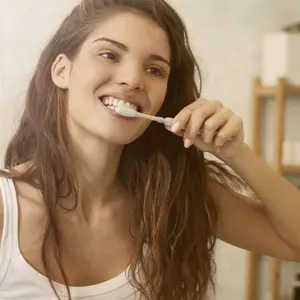

WELLthier Living and Aging

WELLthier Living and Aging
Healthier Ways to Clean Your House
You may already conscious about what you eat and how to use food as your medicine. There’s a good chance you’re conscious about what you put on your body as well.
For many of my clients, cleaning supplies were pretty far down the priority list on things to upgrade because they either didn’t think about it or didn’t realize how much they can impact health.
Many mainstream products we’ve been using for years contain corrosive, toxic chemicals that might “clean” well but they certainly don’t do much to protect our health or the health of our families. These toxic chemicals can leave damaging residues, which are especially harmful when left on food surfaces. They can also contribute to indoor air pollution – or worse – do things like damage our liver, kidneys and nervous system.
Two Rules of Thumb For Purchasing Cleaning Supplies
1: Make sure the ingredients are listed because many brands do not even let you know what’s in the product.
2: Avoid these 7 toxic ingredients:
- Ammonia
Ammonia can be toxic when inhaled and lead to respiratory irritation, dry eyes, headaches, and dizziness. Ammonia is often found in glass cleaners. Never, ever mix this with any bleach cleaners because of the dangerous reaction.
- Antibacterial & Disinfectants
We never needed a total war on all bacteria. Wiping out all the good bugs has allowed the bad bugs to really get a leg up, which is now a leading cause of antibiotic resistance. Avoid ingredients from bleach (also avoid chlorine bleach which is toxic to the eyes and lungs) to triclosan and clean instead with natural soaps.
- Butyl Glycol or Ethylene Glycol
Common chemicals in most general cleaners are dangerous to the nervous system, liver, and kidneys. According to the National Institute for Occupational Safety, “The results of studies in animals have clearly demonstrated (EGBE) dose-related adverse effects on the central nervous system, the hematopoietic tissues, the blood, the kidneys, and the liver. Limited data from humans also indicate the risk of adverse effects on the central nervous and hematopoietic tissues, the blood and the kidneys.”
- Petroleum Solvents
Petroleum-derived ingredients are commonly found in many cleaning products. Also called out by the National Institute for Occupational Safety to cause issues at certain doses: “Eye, nose, and throat irritation, dermatitis, and effects on the nervous system have been found in workers exposed to some refined petroleum solvents. Benzene, which has been shown to cause blood dyscrasias in humans, is present in small amounts in many refined petroleum solvents.”
- Sodium Lauryl (or Laureth) Sulfate (SLS)
This is an anionic detergent and surfactant found in many personal care products and lots of soaps. It helps things foam. The concerning reports on SLS are the ones that report links between it and cancer.
- Phosphates
These harmful compounds are often found in your dishwasher soap. It helps soften water and prevent particles from re-depositing on dishes. The downside are the environmental implications such as excess algae growth in rivers and streams. - Phthalates
Virtually in all things plastic – phthalates are a group of chemicals that make plastic more flexible and harder to break. They are used as dissolving agents in many products. You may see them listed as “fragrance” in many products. They are known hormone disruptors.
If you want to know exactly to what degree your current cleaning supplies are toxic and what you should replace them with, visit The Environmental Working Group. They are a non-profit group that hires researchers dedicated to protecting human health and the environment.
If you are a DIY kind of a person, then make sure you stock citrus peels, lemon juice, baking soda, and white vinegar and make your own cleaning supplies!
This article is reprinted with permission from the author, Christa Orecchio, CN, HHC, and first appeared in The Whole Journey.


 By
By






